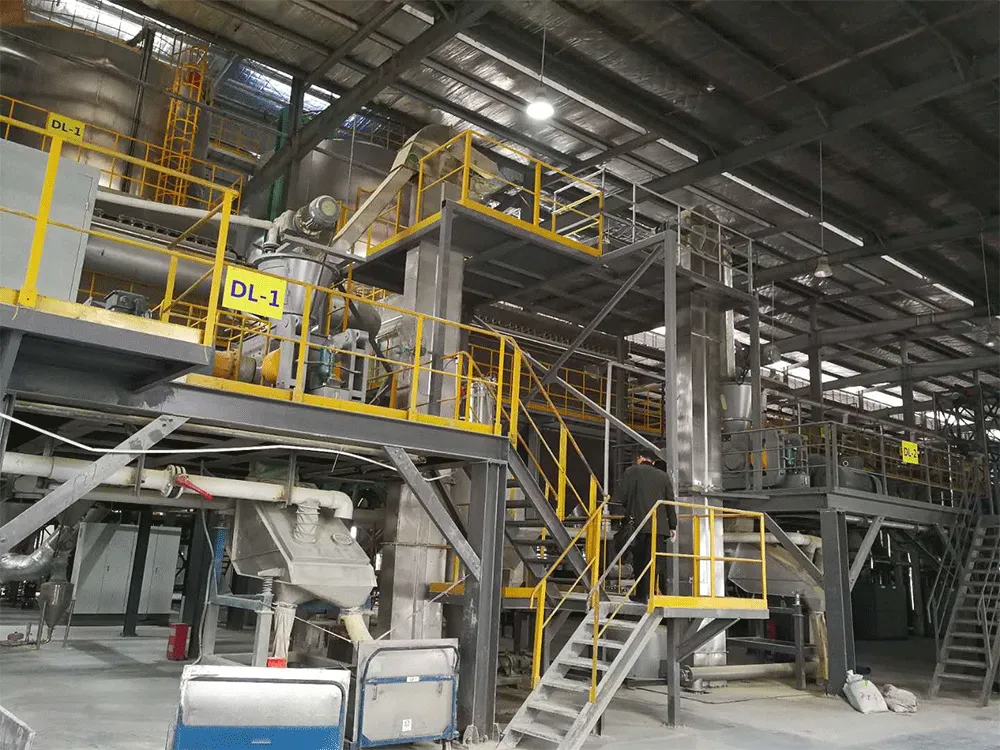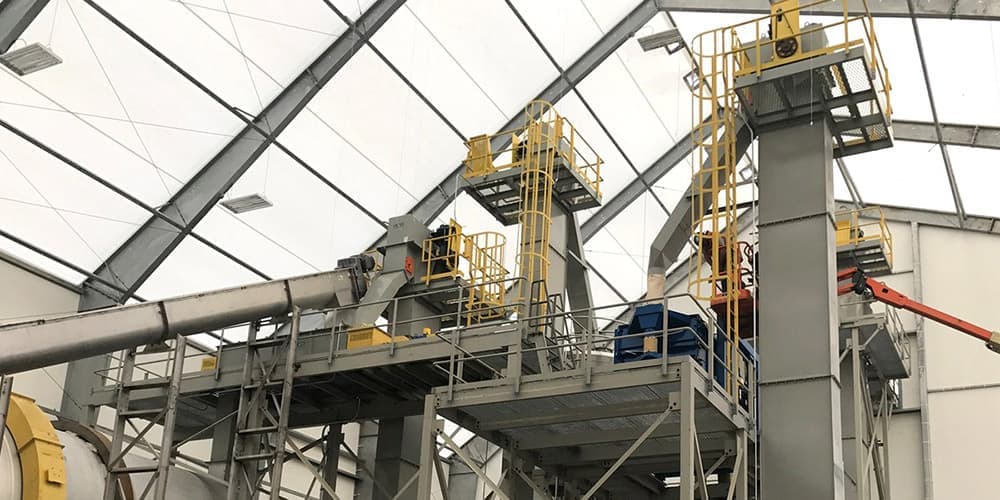Bucket Elevators: Safety and Accessibility Options
Bucket elevators are the standard equipment for vertical conveying in virtually every industry that handles bulk solids. Regardless of the industry, ensuring that the elevator is both safe and easy to operate is critical to complying with regulatory requirements, promoting efficient operations and equipment longevity, and, most importantly, protecting the safety of plant personnel.

Safety design of bucket elevators
The following covers options and design modifications that provide maximum accessibility and safety for bucket elevators.
Accessibility
While many factors are considered in the overall design of a bucket elevator, one aspect that is often overlooked is the accessibility of the equipment.
Safe and easy access to the bucket elevator is critical to maintaining efficient operations and maximizing service life, allowing for critical routine monitoring and maintenance. Depending on the specific production needs and facility infrastructure, the following upgrades and modifications should be considered.
Service platforms, ladders, walkways and safety cages
Service platforms, ladders, walkways and safety cages provide a safe option for plant personnel to access the hoist when monitoring or maintenance is required.
Access doors and viewing windows
Access doors simplify access and maintenance by providing an access point to the inside of the hoist without having to remove or cut housing components.
The viewing window provides a small window for observation. Ideally, there should be a viewing window on both sides of the discharge opening so that the operator can observe the equipment in action and troubleshoot any problems that arise more quickly and easily.
Gravity Tensioners (Chain bucket elevators only)
Gravity tensioning units (GTUs) are standard on most chain hoists. However, it is worth noting that it can be used as an upgrade option for lower capacity single chain hoists, which typically utilize screw tensioning devices.

Instruments and sensors
Bucket elevators can be equipped with a wide range of sensors and instruments for condition monitoring. Sensors can be integrated into Programmable Logic Controllers (PLCs), Motor Control Centers (MCCs), and Human Machine Interfaces (HMIs) for various levels of data tracking and trending, as well as alerting operators to potential problems.
Emergency Stop Buttons
Emergency stop buttons should be installed in the feed and bottom areas, which are often in need of inspection and maintenance. Emergency stop buttons are essential to minimize injury and equipment damage in the event of a problem.
Explosion protection
Explosion protection is essential when dealing with combustible dusts (e.g. coal) or environments where chemical reactions may occur.
Dust protection
Dust containment is an important aspect in many situations, especially when there is a risk of combustion from the dust, air quality hazards, or even cleaning problems that can lead to slips and trips.

General Safety Tips for Bucket Elevators
In addition to designing a bucket elevator for its intended duties, there are a number of practices that can help further maximize safety.
Prioritize cleaning
Keep the area around the equipment clean and free of debris and fugitive materials. Accumulation of these materials can interfere with equipment operation in unexpected ways, and can also create potential fall risks or other safety hazards.
Proactive Prevention
The best way to avoid problems is to prevent them from happening in the first place. In addition to using sensors and gauges to alert to potential problems, plant personnel should take a proactive approach to maintenance. This includes performing routine inspections, performing repairs, and replacing worn or damaged parts before they fail. Never allow a hoist to operate with damaged parts. Maintaining an inventory of bucket elevator parts is also helpful in this endeavor.
Follow all original equipment manufacturer’s operating, lubrication and maintenance recommendations.
Train Employees
Employees should be thoroughly trained in the proper operation and maintenance of the elevators they work around. This should include training on standard safety procedures such as Lockout/Tagout (LOTO), as well as site-specific hazards.

TONGLI: Your Customized Bucket Elevator Specialist
TONGLI is a leading global manufacturer of bucket elevators and has been providing quality material handling solutions to a wide range of industries since 1958. Our experienced team of engineers is dedicated to designing and manufacturing customized bucket elevators to meet your unique needs.
TONGLI bucket elevators offer the following features:
- Reliable and Durable: Manufactured with high quality materials and components to ensure long term reliable operation.
- Customized design: Can be customized to meet your exact material handling requirements based on your specific application and needs.
- Safe and efficient: meets all relevant safety standards and maximizes your productivity.
- Global support: we have offices and distributors around the world to provide you with prompt, quality service and support.
Whether you need a bucket elevator for food processing, fertilizer production lines, chemicals, mining or any other industry, TONGLI is your best choice. We offer a wide range of bucket elevator models to meet all your material handling needs.
Contact us today to learn more about TONGLI bucket elevators!

